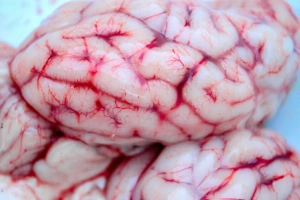The Art of Mind: Designing a Psychology Logo that Speaks to the Soul
In the realm of branding, a logo acts as the face of an organization, encapsulating its essence and values in a singular image. For psychology practitioners, whose work delves deep into the complexities of the human mind, creating a logo that resonates — both visually and emotionally — is paramount. This article explores the intricate art of designing a psychology logo that speaks to the soul, providing insights into psychological principles, design elements, and emotional impacts that can guide practitioners in their pursuit of the perfect symbol.
Understanding the Essence of Psychology
Before embarking on the design process, it’s vital to grasp the essence of psychology as a discipline. Psychology is the study of the mind and behavior, encompassing various facets including cognitive processes, emotional responses, and social interactions. Therefore, a logo for a psychology practice must evoke feelings of trust, understanding, and professionalism, while also hinting at the deeper, more ethereal aspects of the human experience.
The Role of Symbolism in Psychology
Logos often rely on symbolism to convey deeper meanings. In psychology, certain symbols evoke specific associations. For instance:
-
The Brain: Often depicted in logos to represent intelligence and mental processes. The brain symbolizes knowledge, understanding, and cognitive functions[^1].
-
The Tree: A potent symbol for growth and stability, trees can represent personal growth, healing, and the interconnectedness of life[^2].
-
The Open Door: Symbolizing opportunity and new beginnings, an open door can indicate the therapeutic journey of exploration and discovery[^3].
-
Spirals or Infinity Symbols: Often associated with growth, transformation, and the continuity of life, these shapes reflect the ongoing emotional and psychological journeys of individuals[^4].
Emotional Resonance in Design
Psychology is deeply rooted in emotion, and a logo must resonate emotionally with its audience. Understanding color psychology can significantly enhance this emotional connection. Different colors evoke different feelings:
-
Blue: Conveys trust, calmness, and professionalism. Ideal for psychology logos as it creates a sense of security.
-
Green: Represents growth, harmony, and healing. It reflects the journey of personal development and mental well-being.
-
Orange: Exudes warmth and energy, promoting feelings of enthusiasm and creativity, which can be important in therapeutic settings.
-
Purple: Often associated with spirituality and introspection, it can give a mystical quality appropriate for practices focused on deeper human experiences.
Typography and Its Impact
The choice of typography also plays a crucial role in how a logo is perceived. Serif fonts often convey professionalism and tradition, while sans-serif fonts tend to feel more modern and approachable. In the context of psychology, a softer, more rounded font can evoke warmth and accessibility, inviting individuals to approach the practice without fear or stigma.
The Design Process: From Concept to Creation
Designing a logo is more than a creative endeavor; it is a strategic process grounded in an understanding of both the brand and its audience. Here are the key steps involved:
1. Define the Brand Identity
Before moving to the design stage, it’s essential to define the core values and mission of the psychology practice. Questions to consider include:
- What is the primary focus of the practice? (e.g., therapy, counseling, coaching)
- Who is the target audience? (e.g., children, adults, couples)
- What emotions do we want to evoke? (e.g., trust, safety, hope)
2. Conduct Market Research
Understanding competitors and their branding can provide insights into what works and what doesn’t in the industry. Look for logos that resonate with the target audience and identify common themes and successful elements.
3. Sketch Initial Concepts
Start with brainstorming sessions to sketch various concepts. This stage should be exploratory and open-minded, allowing for creativity without restraint. Consider different symbols, shapes, and layouts that could embody the essence of the practice.
4. Develop Digital Prototypes
Once initial designs are narrowed down, move to digital software to create refined prototypes. This step allows for experimentation with colors, typography, and arrangements.
5. Gather Feedback
Collecting feedback from peers, colleagues, or even potential clients can uncover insights that designers may have overlooked. It’s crucial to gauge emotional reactions and associations from various demographics.
6. Finalize the Design
Based on feedback, refine the logo into its final form. Ensure the design is versatile, working well across various mediums, including print and digital formats.
7. Create a Style Guide
Developing a style guide will help maintain consistency in branding. Include specifications on color codes, typography rules, and usage guidelines to ensure the logo is applied effectively across all platforms.
Case Studies of Effective Psychology Logos
The Butterfly Logo: Transformation and Hope
One effective logo design in the psychological space features a butterfly, symbolizing transformation and personal growth. The use of vibrant colors captures attention while presenting a positive, uplifting image, encouraging prospective clients to consider their path to mental well-being.
Key Design Elements:
- Color: A gradient of blues and greens suggesting tranquility and growth.
- Shape: Soft, rounded shapes of the butterfly evoke warmth and approachability.
- Typography: A clean sans-serif font that reinforces modernity and accessibility.
The Tree of Life Logo: Interconnectedness
Another notable design utilizes the Tree of Life, which symbolizes stability, growth, and the interconnectedness of human experiences. This logo often incorporates earthy tones to emphasize the theme of grounding and nurturing.
Key Design Elements:
- Color: A palette of greens and browns promotes warmth and connection to nature.
- Shape: The intricate branches and roots suggest complexity, reflecting the multifaceted nature of human psychology.
- Typography: A simple serif font provides a sense of tradition and professionalism.
Challenges in Logo Design for Psychology Practices
Designing a psychology logo is not without its challenges. Some common pitfalls include:
1. Overcomplicating the Design
In an effort to convey multiple messages, designers may incorporate too many elements into the logo. It’s essential to focus on simplicity and clarity, ensuring the logo is easily recognizable and memorable.
2. Using Clichés
Common symbols like heads with brain imagery can come off as trite or overly clinical. Striving for originality while still capturing the essence of psychology can be a delicate balance.
3. Ignoring the Audience
Designers must keep the target audience in mind throughout the process. A logo that works well for a therapeutic practice aimed at children may not be appropriate for a clinical psychologist working with adults.
4. Failing to Adapt
The logo should be versatile enough to work on various platforms, from business cards to websites. Designers must ensure the design is scalable and looks good in both color and monochrome.
Conclusion: The Power of Design in Psychology
A well-designed psychology logo serves as more than just a branding tool; it encapsulates the soul of the practice while resonating emotionally with clients. By understanding the underlying principles of psychology, color theory, symbolism, and typography, practitioners can create logos that not only represent their brand but also invite individuals to embark on their journey toward mental wellness.
In this intricate dance between design and psychology, logos become conduits of connection, embodying the hope and healing intrinsic to the therapeutic process. As we continue to explore the human experience, the art of designing a logo that speaks to the soul will only become more vital — a symbol of the transformative journeys that lie within us all.
[^1]: E. B. (2022). The Brain in Modern Culture: Understanding Its Impact on Branding. Psychology Today. [^2]: Johnson, L. (2021). Nature and Symbolism in Art Therapy. Journal of Art Psychotherapy. [^3]: Richards, F. (2023). Opening Doors: The Journey of Self-Discovery in Therapy. Clinical Psychology Review. [^4]: Smith, A. (2020). The Infinity of Potential: Symbolism in Psychotherapy. Journal of Humanistic Psychology.


























Add Comment